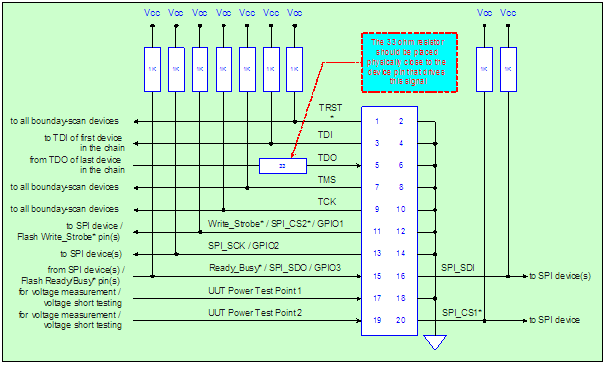Spi Serial Flash Programmer Schematic Design
Everything you ever wanted to know about SPI and a few things you didn't, all controlled from the comfort of your PC. BUILD TIME: 2 HOURSDIFFICULTY RATING: IntermediateHave you ever wanted to control a small Arduino or Raspberry Pi display straight from your PC? How about reading accelerometers from a chip for a programming project?

Its purpose is reading and writing every serial device. At the moment it supports I²C Bus, Microwire, SPI eeprom, the Atmel AVR and Microchip PIC micro. SI-Prog is the programmer hardware interface for PonyProg. Broad offering of Serial SPI, SQI™ and Parallel NOR Flash products. Unsure how to choose the right Flash memory for your design? Learn more about Flash memory terminology and start your selection process. Find Answers. SuperFlash Memory with Pre-Programmed MAC Addresses. I am currently looking into a way to program a serial SPI flash chip. We have a header available on our board, and have a PICKit 2 which we have used for other purposes. It looks to me like it is possible to program a serial flash via SPI using the PICKit 2, but I am not seeing that this has been do.
Or have you wanted to build your own in-system programmer so you can make the leap to embedded projects without all the complexity of having to remove chips so you can plug them into the burner?Then this project is for you. It’s an SPI bootstrap programmer so that you can program a bigger, better SPI programmer that can do much more than just program other chips. It can talk to and read SPI devices, displays and peripherals as well. And it all works from a standard serial port, on any platform, and can be operated by human-readable strings from a serial terminal application such as Putty or Kitty, or even Hyperterminal. 08H = 00 (MSB left)0FH = 10 (MSB left)E8H = 01 (MSB left)EFH = 11 (MSB left)By breaking up a transmission byte into four symbols, we can then send them down the serial port without delays in transmission and the circuit will reconstruct the byte in SPI serial format, with a synchronous clock and a slave select signal. PROGRAMMINGProgramming the Atmel AT89LP4052 (or the AT89LP2052 for that matter).The source code of the programmer fits within a single 2K window, so either chip is suited for programming without modification.
The actual code for that chip, and the details on how to use it as a full SPI bridge, will be in the next article, though the hex file is included with this project so you can test the programmer. You can download this from the resources section of the DIYODE website.Programming the AT89LP4052 requires an SPI interface.
We have that. You need to reset the chip - we have a reset button on top which can be held down for the duration of programming.
You also need an AT89LP2052 in-circuit. We have all of that. Now we just need the hex-file of the program and a short program to generate the correct data stream, which will consist of some preamble bytes to put the processor into programming mode, an erase instruction (optional. You can just rewrite it without erasing), a PAGE write instruction with the correct address taken from the HEX file, and the subsequent characters from the HEX file related to that page converted to four-symbols-per-byte and transmitted through the serial port.Each byte to the AT89LP4052 has a prefix to let the chip controller know that it’s supposed to be listening. For other chips in the series, it’s usually AA55, which is actually a common bootstrap code dating back to floppy and hard disks, but in the case of this processor, they shortened it to just AA.That’s at the start of the programming command summary (see table) so we want to “Program Enable” the chip. AA50 0020034Our program should ask the user to press and hold the RESET button on the programmer now, and then transfer the file to the bootstrap programmer. Having a pause here or waiting for a keypress first is a good idea.Each line of the hex file is read in and transferred this way, until the entire file is transmitted.
Spi Flash Programmer
There’s an included HEX file, a pre-prepared download file and a file transfer program included with the downloads for those who want to just skip this step.So a simple program to transfer this is all that is required. When you get the record type of 01, that means you’ve read in all the code, and it’s time to leave the programming mode and send a message to the screen to release the reset button.If you want to know more about the INTEL HEX FILE FORMAT, there’s a great article on Wikipedia here that explains it in more detail:At this point, if you’ve written the bootstrap program correctly, the program should fire up and start sending the data from the hex-file to the RS232 interface. Because there’s an LED attached to the Slave Select line, if it’s working you should see this pulse very dimly.Once the programming is finished, release the reset button and the SPI bridge should respond with the following message.